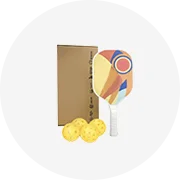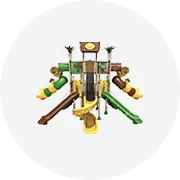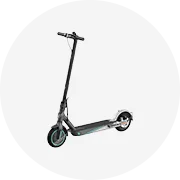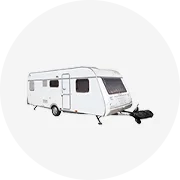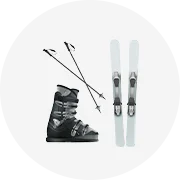Types of Stainless Steel Nudge Bar
A stainless steel nudge bar, also known as a bull bar or push bar, is a vehicle accessory mounted on the front of a vehicle. Designed to protect the vehicle's front end from damage in minor collisions (particularly with animals), nudge bars improve vehicle appearance and provide mounting points for auxiliary lights, winches, or other accessories. Many luxury vehicle manufacturers fit nudge bars as standard equipment.
Key Benefit: Stainless steel nudge bars combine durability with corrosion resistance, making them ideal for both off-road adventures and city driving in various weather conditions.
Single Bar Nudge Bars
Feature a simple design with one or two curved bars extending from the vehicle's front. Ideal for light-duty applications and frequently used in passenger cars and SUVs.
Best for: Urban driving, aesthetic enhancement, light protection
Multi-Bar Nudge Bars
Consist of several parallel bars extending from the vehicle's front. Their design offers more protection than single-bar variants, making them suitable for commercial vehicles and off-road applications.
Best for: Enhanced protection, commercial use, frequent off-road driving
Tube Nudge Bars
Feature a tubular design with rounded or square tubes. These bars have a distinctive appearance and offer various levels of protection depending on tube size and thickness. Popular in off-road and recreational vehicles.
Best for: Unique aesthetics, customizable protection levels
Winch-Compatible Nudge Bars
Include integrated winch mounting points, allowing users to install a winch for self-recovery in challenging terrains. Commonly used on off-road and commercial vehicles.
Best for: Off-road enthusiasts, recovery scenarios, adventure vehicles
LED Light Bar-Compatible Nudge Bars
Feature integrated mounting points for LED light bars, enhancing visibility during nighttime or low-light conditions. Commonly used on off-road and commercial vehicles.
Best for: Night driving, rural areas, enhanced visibility needs
Custom Stainless Steel Nudge Bars
Manufacturers can customize nudge bars to meet specific requirements, modifying size, shape, and mounting options to fit particular vehicle models and include unique features.
Best for: Specialized requirements, unique vehicle modifications
| Nudge Bar Type | Protection Level | Vehicle Type | Primary Uses |
|---|---|---|---|
| Single Bar | Light | Passenger cars, SUVs | Urban driving, aesthetic enhancement |
| Multi-Bar | Medium to High | SUVs, Commercial vehicles | Off-road, rural driving |
| Tube | Medium | Recreational vehicles | Distinctive appearance, customizable protection |
| Winch-Compatible | High | Off-road vehicles | Self-recovery, challenging terrains |
| LED-Compatible | Medium | All types | Enhanced visibility, night driving |
Specifications and Maintenance of Stainless Steel Nudge Bars
Key Specifications
The specifications of stainless steel nudge bars vary depending on the model, manufacturer, and vehicle compatibility. Understanding these specifications is crucial for selecting the right nudge bar for your vehicle.
| Specification | Description | Standard Range |
|---|---|---|
| Construction Material | Stainless steel (primary material), known for durability and corrosion resistance | 304 or 316 grade stainless steel |
| Tube Diameter | Affects protection capability; thicker tubes provide more resilience | 50-76mm (2-3 inches) |
| Finish | Affects corrosion resistance and appearance | Polished or powder-coated |
| Mounting Method | How the bar attaches to the vehicle chassis | 4-point mounting with brackets |
| Weight | Affects vehicle handling and fuel efficiency | 15-30kg (33-66 lbs) |
Pro Tip: When choosing a stainless steel nudge bar, consider both the grade of steel and the finish. 316 grade stainless steel offers superior corrosion resistance, especially important for coastal environments where salt exposure is high.
Maintenance Guidelines
Proper maintenance ensures your stainless steel nudge bar remains functional and visually appealing for years. Follow these maintenance steps regularly:
Regular Cleaning
Clean regularly to prevent dirt, dust, and debris accumulation. Use a gentle soap solution, soft cloth, and brush. Rinse thoroughly with clean water and dry with a soft cloth to prevent water spots.
Frequency: At least monthly, more often in harsh conditions
Damage Inspection
Regularly inspect for signs of wear and damage. Promptly repair scratches or dents to maintain appearance and structural integrity. Check for any deformation that might affect functionality.
Frequency: Quarterly and after any impact
Hardware Checks
Check mounting hardware regularly to ensure secure attachment. Inspect brackets, bolts, and other mounting components for wear, damage, or loosening. Tighten any loose hardware immediately.
Frequency: Monthly and after off-road use
Polishing and Protection
Use stainless steel polish to maintain shine and add a protective coating. Apply with a soft cloth and buff to a shine for optimal results and extended protection.
Frequency: Every 2-3 months
Rust Prevention
Treat any signs of rust promptly. Clean rusted areas gently with fine sandpaper or stainless steel cleaner, then clean and dry thoroughly. Apply a rust inhibitor or protective coating to prevent further rusting.
Frequency: As needed, inspect monthly
Seasonal Considerations
In winter or coastal areas, increase cleaning frequency due to salt exposure. After off-road adventures, clean thoroughly to remove mud, debris, and potential corrosives like road salt or plant acids.
Frequency: Adjust based on conditions
Important: Never use abrasive cleaners, steel wool, or brushes with metal bristles on stainless steel nudge bars as they can scratch the surface and compromise the protective finish. Additionally, avoid chlorine-based cleaners as they can cause corrosion.
How to Choose Stainless Steel Nudge Bars
Selecting the right stainless steel nudge bar requires careful consideration of several factors to ensure it meets your specific needs, preferences, and vehicle requirements.
| Selection Factor | Key Considerations | Why It Matters |
|---|---|---|
| Purpose | Off-road, city driving, or combined use | Different environments require different designs and features |
| Vehicle Compatibility | Make, model, year, and mounting options | Ensures proper fit and function without modifications |
| Material Quality | Grade of stainless steel (304, 316) | Determines durability and corrosion resistance |
| Design and Style | Aesthetic match with vehicle appearance | Enhances overall vehicle look and personal satisfaction |
| Functionality | Light mounts, winch compatibility, additional features | Expands utility beyond basic protection |
| Brand Reputation | Quality, customer service, warranty | Indicates reliability and post-purchase support |
| Price | Budget constraints vs. quality requirements | Higher price often correlates with better materials and design |
| Legal Regulations | Local laws regarding vehicle modifications | Ensures compliance and avoids penalties |
Expert Advice: When balancing budget against quality, consider the intended use duration. If you plan to keep your vehicle for many years, investing in a higher-grade stainless steel nudge bar will provide better long-term value despite the higher initial cost.
Additional Selection Considerations
Installation Requirements
Consider whether you plan to install the nudge bar yourself or have it professionally installed. Some models come with comprehensive DIY instructions and all necessary hardware, while others may require specialized tools or professional knowledge.
Recommendation: Check installation complexity before purchasing
Weight Considerations
Nudge bars add significant weight to the front of your vehicle, which can affect handling, fuel efficiency, and wear on front suspension components. Consider lighter options for smaller vehicles or daily commuters.
Recommendation: Balance protection needs with weight impact
Airbag Compatibility
Modern nudge bars should be designed to work with your vehicle's airbag system. Ensure the model you choose is certified as airbag compatible, especially for newer vehicles with pedestrian protection systems.
Recommendation: Never compromise on safety features
DIY Installation of Stainless Steel Nudge Bars
Installing a stainless steel nudge bar is a relatively straightforward process that most vehicle owners can accomplish with basic tools and careful attention to detail. Follow these steps for a successful installation:
Select a nudge bar specifically designed for your vehicle make and model. Ensure it fits your vehicle's contours and mounting points for proper installation and appearance.
Prepare a socket wrench, ratchet, and the mounting hardware (typically included with the nudge bar). Additional tools may include a torque wrench, measuring tape, and masking tape for marking positions.
Loosen the bolts holding the front license plate. Attach the license plate bracket included with the nudge bar to ensure proper positioning without interfering with the vehicle's design.
Carefully position the nudge bar on the vehicle's front, aligning it with the mounting points on the frame or chassis (usually near front bumper edges). Ensure it's centered and level for optimal appearance and function.
Slide the brackets into the mounting points on the nudge bar. Use a socket wrench and the provided bolts to secure them. Tighten firmly but avoid over-tightening to prevent damage to the bar or vehicle frame.
Double-check that the nudge bar remains level and centered before final tightening. Make any necessary adjustments to ensure proper positioning and appearance.
Once alignment is verified, fully tighten all bolts using even pressure. Uneven tightening could cause the nudge bar to warp or mounting points to misalign. Consider using a torque wrench to achieve manufacturer-specified tightness.
Take a test drive and check the nudge bar's stability and alignment after a short distance. Listen for any unusual vibrations or rattles that might indicate loose components.
Safety Warning: Always ensure the nudge bar is securely mounted before driving at normal speeds. A loose nudge bar can become a serious safety hazard if it detaches while driving. If you're uncertain about any aspect of the installation, consult a professional.
Installation Tip: Take photos of your vehicle's front end before beginning installation. This provides a reference point for proper alignment and can help identify any fitment issues early in the process. Having a helper hold the nudge bar in position while you secure the initial mounting points can make the job significantly easier.
Frequently Asked Questions
A nudge bar is a vehicle accessory made of steel or aluminum installed on the front of a vehicle. It's designed to protect the vehicle's front end from minor collisions and pedestrian incidents while providing mounting points for auxiliary lights and other accessories. Unlike full bull bars, nudge bars offer a more streamlined appearance while still providing front-end protection.
The two main categories are stainless steel nudge bars and powder-coated steel nudge bars. Stainless steel variants offer superior corrosion resistance and longevity but at a higher price point. Powder-coated steel options are more affordable but more susceptible to rust over time. Within these categories, designs include single-bar, multi-bar, tube-style, winch-compatible, and LED light-compatible configurations to suit different needs and vehicle types.
The key differences between nudge bars and bull bars include:
- Size and Coverage: Nudge bars are smaller and cover less of the vehicle front than bull bars
- Protection Level: Nudge bars offer minimal protection for light-duty vehicles, while bull bars provide maximum protection for heavy-duty vehicles
- Design: Nudge bars typically feature a simpler, more streamlined design compared to the robust construction of bull bars
- Weight: Nudge bars are generally lighter, having less impact on vehicle handling and fuel economy
- Application: Nudge bars are more common on urban and suburban vehicles, while bull bars are typically found on off-road and rural vehicles
No, nudge bars are designed to fit specific vehicle makes and models. A nudge bar designed for one vehicle model cannot be properly installed on a different model because:
- Each vehicle has unique chassis and mounting point configurations
- The contours and dimensions of front ends vary significantly between vehicle models
- Proper alignment with safety features (like airbags) requires model-specific design
- Weight distribution and structural integration must be engineered for each vehicle type
Always purchase a nudge bar specifically designed for your vehicle make, model, and year to ensure proper fit, function, and safety.
Yes, nudge bars can impact a vehicle's aerodynamics and fuel economy. Adding a nudge bar creates additional drag as it disrupts the airflow over the front of the vehicle. This increased wind resistance typically results in a minor reduction in fuel efficiency—generally 1-3% depending on the design and size of the nudge bar. Streamlined designs with smaller profiles tend to have less impact than larger, more robust designs. The effect is most noticeable during highway driving at higher speeds.




















































